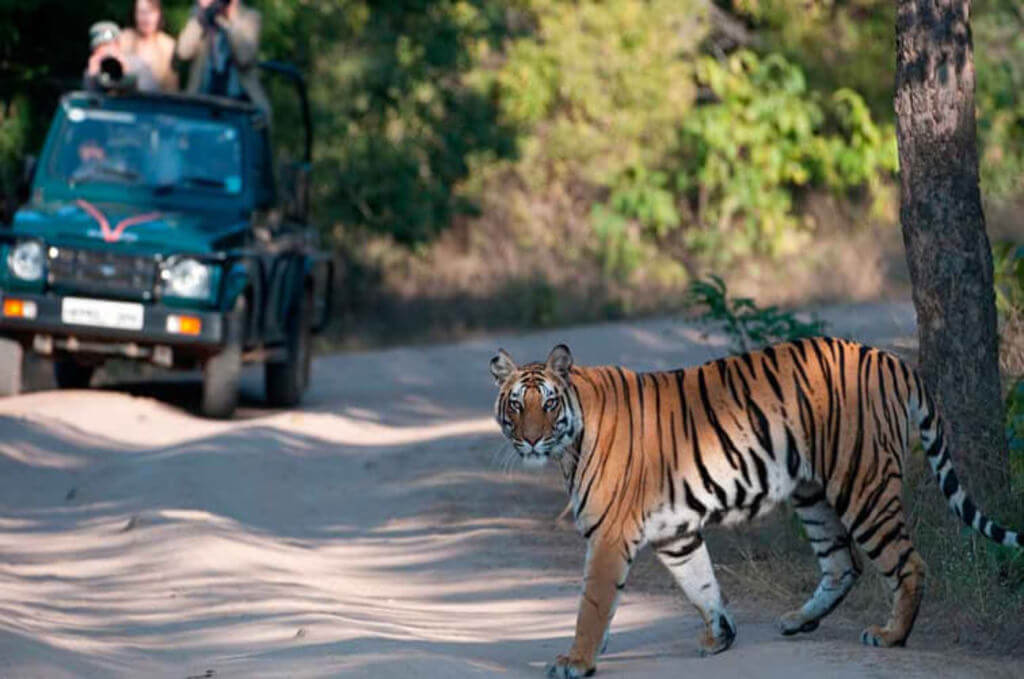India’s dense forests, vast grasslands, and unique ecosystems offer more than just breathtaking landscapes — they house the largest population of wild tigers in the world. A tiger safari in India is not merely a tourist activity; it’s an invitation to explore the wild, connect with nature, and witness firsthand the fragile balance between human life and wildlife conservation.
A Wildlife Adventure Like No Other
The Bengal tiger, a symbol of strength and grace, roams freely across India’s protected tiger reserves. Seeing one in the wild — whether it’s lounging by a waterhole, patrolling its territory, or vanishing silently into the bush — is a thrilling experience that leaves visitors in awe. But a tiger safari in India is not just about the tigers. It’s about spotting leopards in the trees, elephants in herds, deer leaping through tall grass, and birds of all colors calling from the treetops.
Each safari is a carefully orchestrated adventure, combining expert tracking skills, ecological knowledge, and a bit of luck. It’s this unpredictable, authentic encounter with nature that makes a tiger safari in India so compelling for travelers from all over the world.
Best Tiger Safari Parks in India
India has over 50 tiger reserves, each offering a unique safari experience. Below are some of the most impressive and rewarding ones:
1. Nagarhole National Park (Karnataka)
Part of the Nilgiri Biosphere Reserve, Nagarhole is known for its rich wildlife and thick forest cover. Visitors often spot tigers, leopards, elephants, and Indian bison (gaur). The Kabini River running through the park adds a scenic charm and attracts wildlife during dry seasons.
2. Periyar Tiger Reserve (Kerala)
Nestled in the Western Ghats, Periyar offers a rare combination: wildlife viewing and boat safaris. Though tiger sightings are rare here, the park’s serene beauty, spice plantations, and unique cultural flavor make it a standout destination.
3. Dudhwa National Park (Uttar Pradesh)
Located near the India-Nepal border, Dudhwa is a lesser-known gem for tiger safaris. It’s also home to the rare swamp deer and a small population of Indian rhinos. If you’re looking to escape the crowds and experience raw wilderness, this park is ideal.
4. Mukki and Kisli Zones of Kanha (Madhya Pradesh)
While Kanha is already popular, its Mukki and Kisli zones offer particularly high chances of spotting tigers, along with barasinghas and sloth bears. These zones are well-managed, and safaris often include educational briefings about conservation.
When to Go on a Tiger Safari in India
The timing of your safari can dramatically affect your experience. Here’s a seasonal guide:
- Winter (October–February): The forest is lush and green, temperatures are cool, and visibility is clear. A great time for birdwatchers and families.
- Summer (March–June): This is the peak tiger sighting season. As water sources dry up, tigers emerge from hiding and frequent rivers and ponds, offering spectacular viewing opportunities.
- Monsoon (July–September): Most parks remain closed due to heavy rain and breeding seasons for animals.
Conservation: The Heart of Every Safari
Behind the thrill of a tiger safari lies a deep-rooted conservation mission. The survival of the Bengal tiger is under constant threat due to habitat loss, poaching, and human-wildlife conflict. The Indian government’s Project Tiger, launched in 1973, has played a vital role in reviving tiger numbers through habitat protection, relocation of villages, and anti-poaching measures.
Tourism, when practiced responsibly, has become a major asset to this mission. Park entry fees, local guide employment, and eco-lodge revenues all contribute to the protection of these majestic cats and their habitats. However, over-tourism and irresponsible behavior can threaten delicate ecosystems. As a visitor, following guidelines, avoiding plastic, and respecting the animals’ space are small but powerful acts of support.
Essential Tips for Your Tiger Safari in India
- Choose an Ethical Safari Operator – Work with companies that prioritize wildlife welfare over commercial interests.
- Dress for the Wild – Wear neutral colors like brown, green, and khaki to blend in with the surroundings.
- Stay Quiet and Patient – Nature works on its own schedule. Silence increases your chance of seeing animals and preserves the peace of the forest.
- Respect Zone Rules – Each park has core and buffer zones with specific rules; follow them strictly.
- Go Beyond the Tiger – While the tiger is the star, enjoy the full range of biodiversity — from birds and butterflies to reptiles and rare plants.
Conclusion
A tiger safari in India is an unforgettable journey into one of the world’s richest wildlife habitats. From the dry sal forests of central India to the wet, tangled mangroves of the Sundarbans, each safari presents a new opportunity to reconnect with nature and be part of a larger conservation story.
Whether you are a seasoned wildlife photographer or a first-time traveler seeking adventure, India’s tiger reserves welcome you with open arms and the roar of the jungle. Every safari is a step closer to understanding the wild, and every sighting, no matter how fleeting, is a moment of magic that stays with you forever.

Leave a Reply